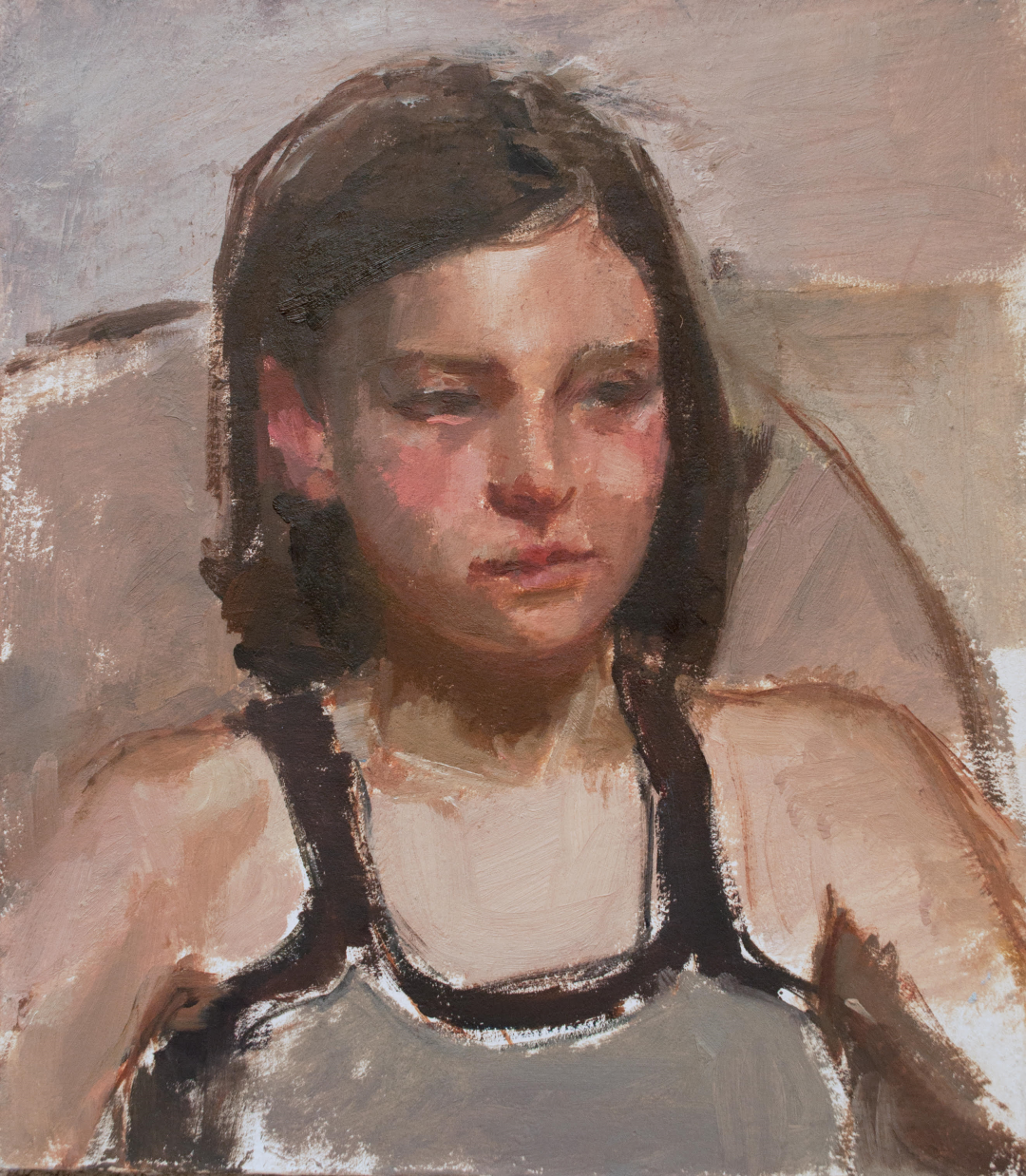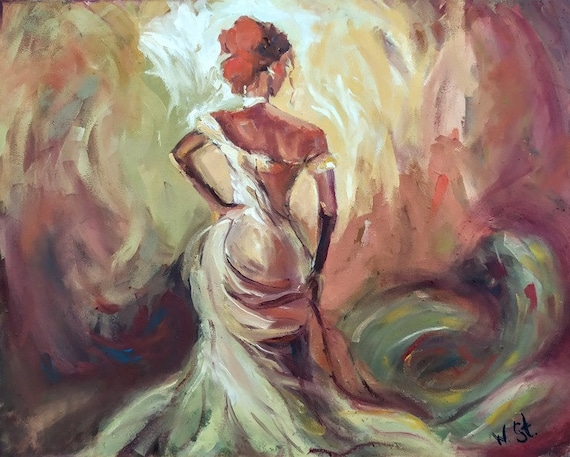A Trip Through the Globe of Metaphorical Oil Painting: Uncovering the Distinct Qualities and Psychological Depth of the Tool

Background of Figurative Oil Paint
Arising throughout the late Center Ages and prospering throughout the Renaissance, metaphorical oil paint has an abundant history that mirrors both imaginative technology and cultural development. Oil paints were utilized in Europe as a method to enhance the luminosity and deepness of shade in art work. Artists such as Jan van Eyck pioneered the tool, demonstrating its prospective to capture intricate information and appearances, therefore enabling a more natural depiction of the human kind.
As the Renaissance advanced, distinguished figures like Leonardo da Vinci and Michelangelo expanded the borders of figurative oil painting. They stressed physiological accuracy and perspective, developing works that conveyed feeling and narrative depth. The tool's adaptability allowed for trial and error with light and shadow, bring about the advancement of chiaroscuro techniques that even more enriched the aesthetic experience.
Special Qualities of the Tool
The development of figurative oil painting has been dramatically affected by the distinct characteristics of the tool itself. Oil paint, composed of pigments put on hold in oil, uses artists an impressive flexibility that permits a vast array of structures and finishes. Its slow-moving drying time enables precise mixing and layering, which can create depth and luminance unattainable in other mediums.
Furthermore, oil paint's abundant coloring supplies dynamic shades that preserve their intensity gradually. This characteristic is crucial in figurative paint, where capturing the subtleties of skin tones and emotional expressions is vital. The capacity to achieve soft transitions and subtle slopes improves the natural quality of topics, enabling artists to convey complicated emotions.
Additionally, oil paint sticks well to numerous surface areas, such as timber, canvas, and steel, broadening the extent of artistic expression. The tool's versatility sustains various approaches, from in-depth realistic look to meaningful brushwork, allowing artists to discover their individual designs.
Ultimately, the special residential or commercial properties of oil paint not just enrich the visual experience yet also equip artists to connect extensive stories, making figurative oil painting a deeply evocative art form.
Techniques and Styles Utilized
Within the world of metaphorical oil paint, artists utilize a diverse selection of techniques and designs that add to the deepness and richness of their work. One famous technique is glazing, where transparent layers of paint are applied over dried layers, permitting light to show and penetrate, enhancing luminance and depth. This approach is frequently made use of to accomplish a sense of realistic look and complexity in complexion.
Another technique is impasto, where thick layers of paint are used with a combination blade or brush, creating a textured surface that includes a three-dimensional high quality to the painting. This design can evoke a natural response, attracting the viewer in via its tactile nature.
Musicians likewise discover various brushwork designs, from fine, in-depth strokes that capture complex features to wider, much more meaningful strokes that convey motion and feeling (figurative oil painting). The choice of color scheme substantially affects the general state of mind of an item, with warm tones usually passing on sensations of convenience and awesome tones suggesting melancholy
Additionally, the assimilation of chiaroscuro, the contrast between light and darkness, permits musicians to create remarkable results that enhance the narrative quality of their work. Each method and design is carefully chosen to raise the visitor's experience and understanding.
Psychological Depth in Figurative Art
Emotional depth functions as a keystone in metaphorical art, permitting artists to transcend plain representation and engage audiences on a profound level. This emotional view publisher site resonance is commonly attained through the nuanced portrayal of human figures, expressions, and interactions. Artists harness the power of color, shadow, and light to stimulate their website sensations that reverberate deeply with the target market, developing a visceral link to the topic.
In metaphorical oil paint, the detailed layering of paint can mirror the intricacies of human feeling. The option of combination, whether great or cozy, plays a critical role in setting the state of mind and ambience of an item. For circumstances, softer colors may evoke tranquility and introspection, while bold, different shades can connect tension and dramatization.

Influential Artists and Their Functions
Numerous prominent musicians have dramatically shaped the landscape of figurative oil painting, each contributing unique point of views and strategies that continue to influence modern creators. Among these musicians, Lucian Freud attracts attention for his intense mental deepness and raw representation of the human form, commonly obscuring the lines between charm and degeneration. Freud's works, defined by thick, impasto brushstrokes, welcome visitors to confront the complexities of identity and susceptability.

In A Similar Way, Andrew Wyeth's thorough realistic look in items like "Christina's Globe" catches profound Bonuses narratives within apparently straightforward make-ups. His usage of light and shadow evokes a feeling of fond memories and emotional resonance, attracting visitors right into the intimate worlds he portrays.
In the world of contemporary art, Kehinde Wiley has acquired recognition for his vibrant, epic portraits that challenge typical ideas of representation. By placing individuals of shade in contexts similar to timeless portrait, Wiley's job redefines the canon of art history.
These musicians, together with others, have not only enriched metaphorical oil painting yet have actually also increased the discussion surrounding identity, feeling, and culture, making certain that the medium stays a vital kind of expression in the art world. figurative oil painting.
Verdict
Finally, metaphorical oil painting remains a powerful tool that envelops the complexities of human feeling through its abundant pigmentation and flexible strategies. The historical development of this art form, integrated with its unique attributes, enables profound imaginative expression. Techniques such as glazing and impasto improve the emotional resonance of each item, while the contributions of prominent musicians continue to motivate and form the discourse surrounding this timeless category. The journey via figurative oil paint discloses its long lasting value in the art world.
The exploration of metaphorical oil paint provides a profound understanding right into the interaction of technique, emotion, and historical context that defines this venerable medium. Oil paint, composed of pigments put on hold in oil, uses musicians a remarkable adaptability that enables for a large range of structures and surfaces.Within the world of figurative oil painting, artists utilize a diverse range of methods and styles that contribute to the depth and richness of their job.Numerous influential musicians have actually dramatically formed the landscape of metaphorical oil paint, each contributing special point of views and methods that continue to inspire modern makers.In verdict, metaphorical oil paint remains an effective tool that encapsulates the complexities of human emotion via its abundant pigmentation and versatile strategies.